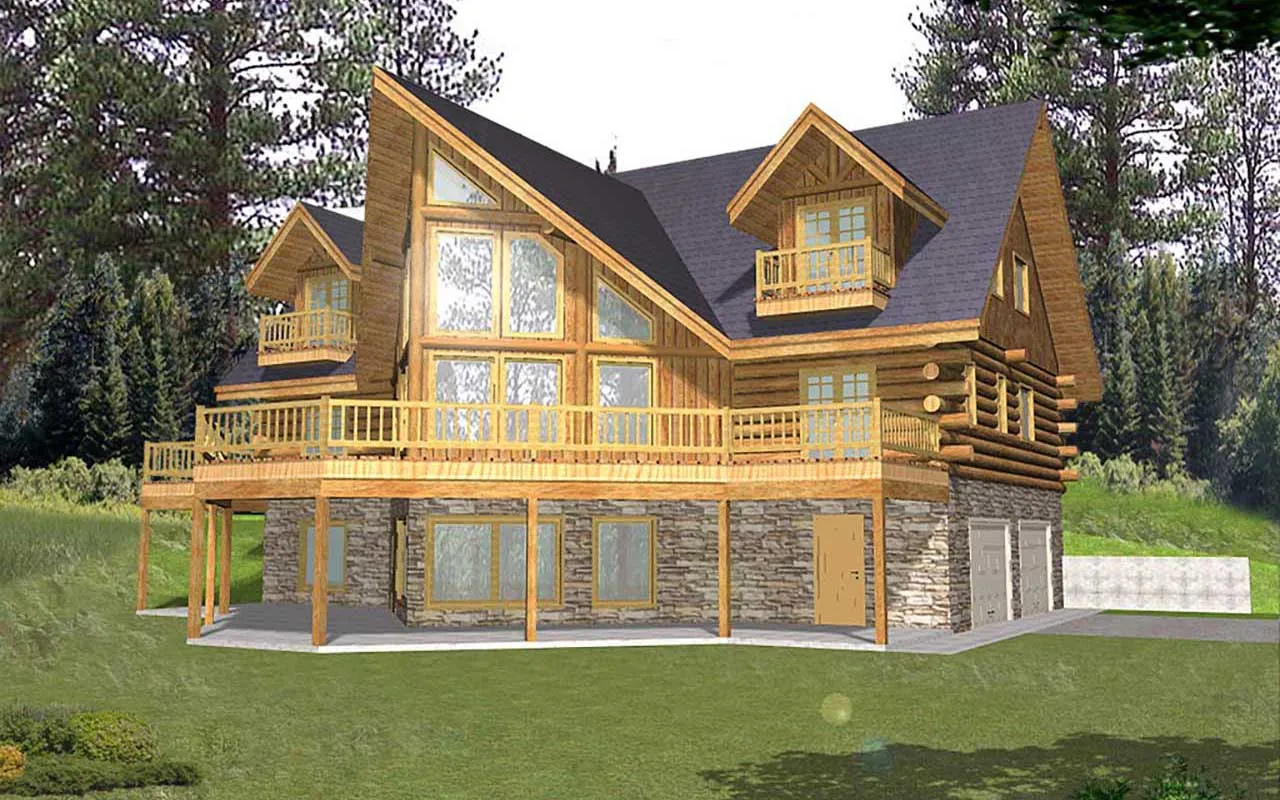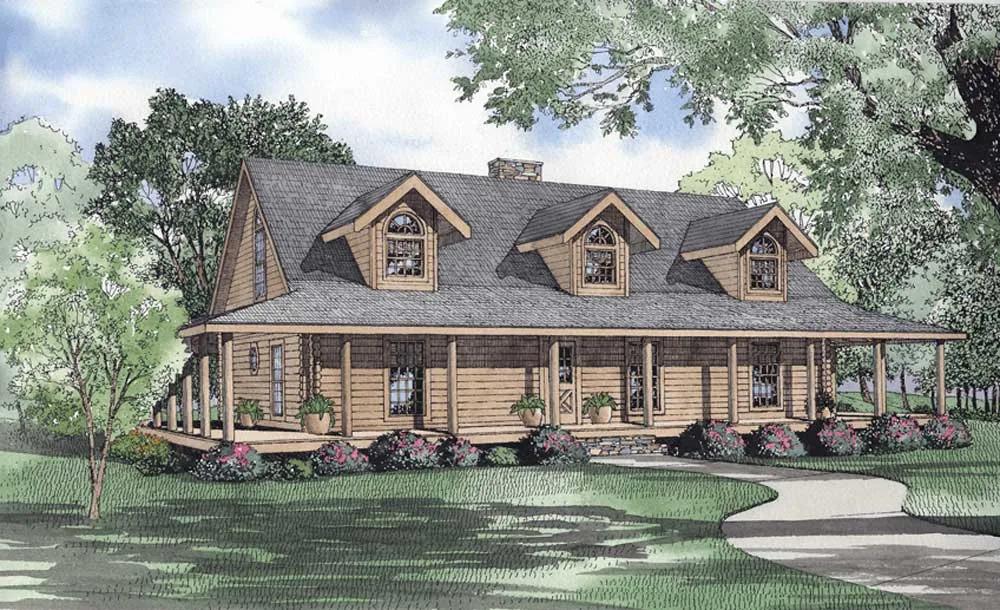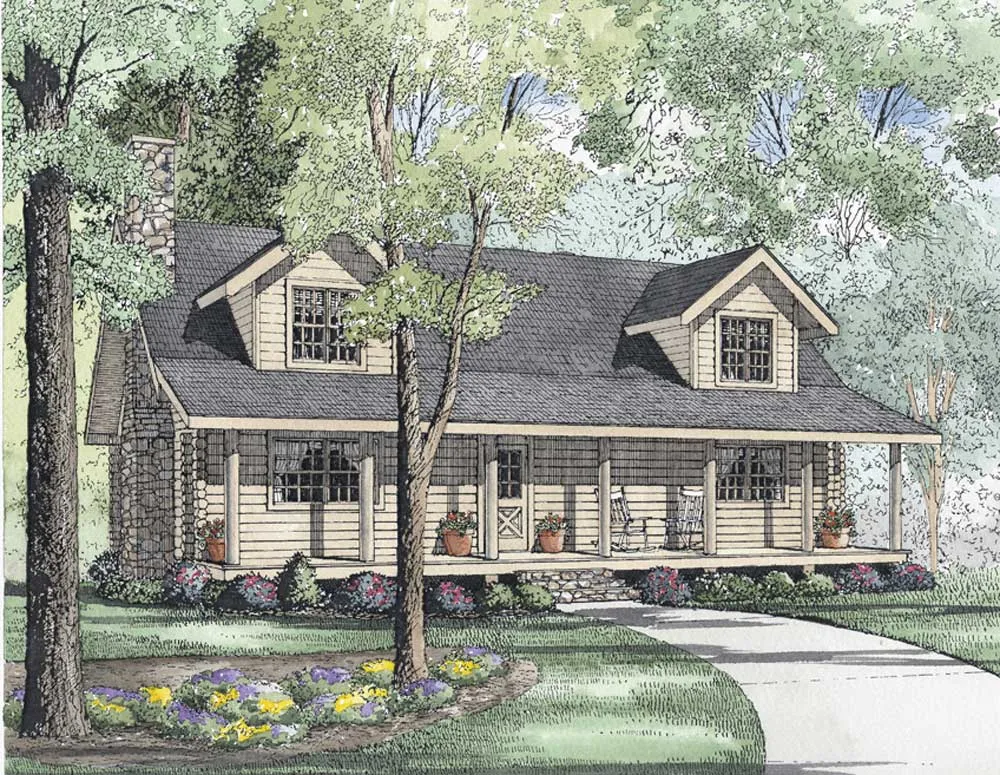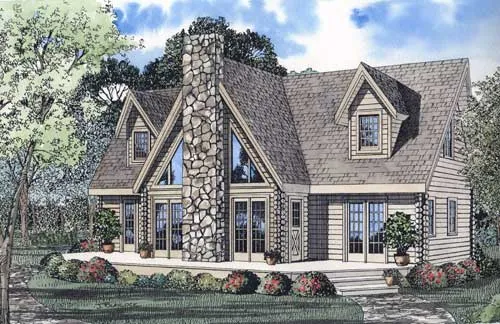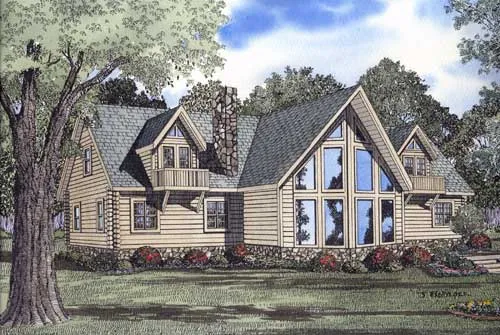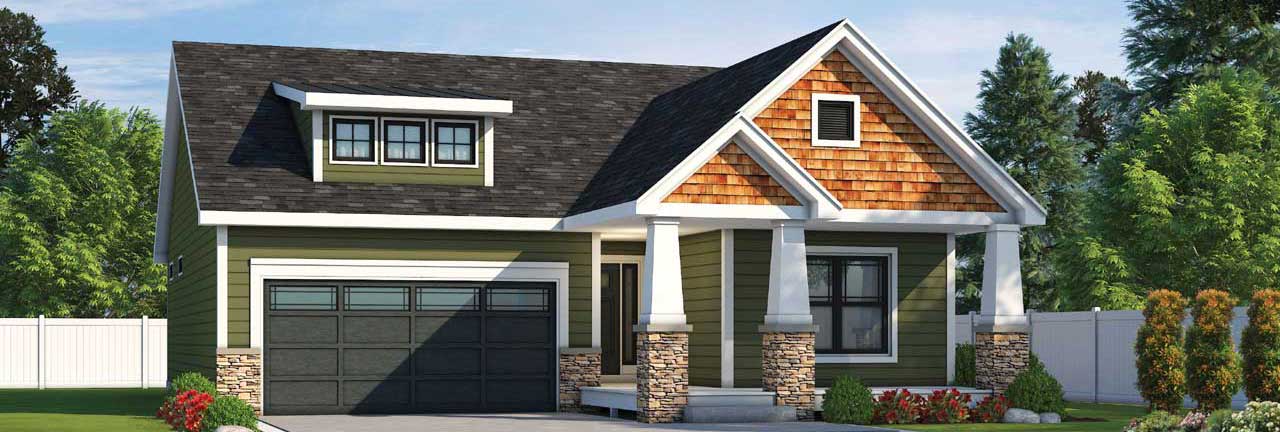Log Cabin House Plans
Bold, robust timber with classic lines and lots of natural, earthy touches inside: If you’re considering investing in a log home plan, these details appeal to you.
Log cabin plans are not just novelty properties — many U.S. families want to create and build these rustic and unexpected floor plan designs as their primary residence. And while building log cabin plans might be more expensive than conventional homes, they also sell much faster than traditional home plans.
Hundreds of log home plans are available on Monster House Plans, from A-frame orientations to multi-bedroom with ample square footage. Start your search right here.
Read More- 2 Stories
- 3 Beds
- 2 - 1/2 Bath
- 1987 Sq.ft
- 2 Stories
- 3 Beds
- 2 Bath
- 2 Garages
- 1744 Sq.ft
- 2 Stories
- 4 Beds
- 3 - 1/2 Bath
- 4565 Sq.ft
- 2 Stories
- 3 Beds
- 3 Bath
- 2683 Sq.ft
- 2 Stories
- 3 Beds
- 3 Bath
- 2 Garages
- 3219 Sq.ft
- 2 Stories
- 6 Beds
- 4 - 1/2 Bath
- 3 Garages
- 3670 Sq.ft
- 2 Stories
- 3 Beds
- 3 Bath
- 2 Garages
- 2291 Sq.ft
- 2 Stories
- 4 Beds
- 3 Bath
- 2741 Sq.ft
- 2 Stories
- 3 Beds
- 2 - 1/2 Bath
- 1810 Sq.ft
- 2 Stories
- 4 Beds
- 3 Bath
- 3098 Sq.ft
- 2 Stories
- 2 Beds
- 2 - 1/2 Bath
- 1449 Sq.ft
- 2 Stories
- 3 Beds
- 2 - 1/2 Bath
- 2402 Sq.ft
- 1 Stories
- 2 Beds
- 2 Bath
- 1390 Sq.ft
- 2 Stories
- 2 Beds
- 1 Bath
- 977 Sq.ft
- 2 Stories
- 2 Beds
- 2 Bath
- 1216 Sq.ft
- 2 Stories
- 5 Beds
- 3 - 1/2 Bath
- 3 Garages
- 3492 Sq.ft
- 2 Stories
- 3 Beds
- 2 - 1/2 Bath
- 3341 Sq.ft
- 1 Stories
- 4 Beds
- 2 - 1/2 Bath
- 2 Garages
- 3649 Sq.ft
The History of Log Cabin Plans
Log homes instantly bring to mind the early days of settlers, rugged American frontiers, and “Honest Abe.” But today’s log cabin plans date back to Roman times when architect and engineer Vitruvius recounted how the Colchians in Pontus would lay down entire felled trees to build log homes.
Log cabin plans became popular thanks to early settlers from Northern Europe. Since settlers needed to fall trees and clear the land to farm, it made sense to repurpose the logs to build homes that would protect them from the elements while they worked.
It’s no wonder why they still represent that American ideal of “frontiersman,” “independence,” “DIY,” and “self-reliance.”
Early settler America eventually became industrial America, and that’s the point where log timbers were replaced by sawmill lumber, siding, and plaster. The log cabin style gained further notoriety when the National Park Service adopted it as an official theme for all its parks’ offices in 1904.
In the 1960s, log homes became a popular counter-response to the growth and expansion of row houses and “suburbia.” It was seen as a way to “get back to nature” and became a principal home rather than just a retreat or escape property.
Common Features of Log Home Floor Plans
Although they’re quite nostalgic, modern-day log cabin plans feature state-of-the-art engineering and details. For example, milled log homes have a square — rather than a round — profile with grooves that position the log securely, keep it from warping, and eliminate drafts.

These expertly-engineered logs may also come in various notching systems depending on the type of architecture, such as the butt and pass, full dovetail, corner post, or Scandanavian saddle techniques.
But there’s more to log home floor plans these days. Let’s look at some of the most common features you can expect.
Feature #1: Natural Materials
Architects and builders can customize the details of log home floor plans to suit any family’s needs, but they all use natural materials like wood, stone, timber planks, siding, and milled logs. Building with these materials tends to make these floor plan designs more eco-friendly and keep the “earthy” and “outdoor” vibe alive.

Of course, many people also choose to extend this natural and sustainable approach with options like greywater systems and solar panels for power. These are intelligent additions since log home floor plans are usually located in the countryside or less populated areas.
Feature #2: Wraparound Porches
Location is critical in this type of home plan. Log homes should be located in quieter areas on large lots — and their outdoor, somewhat secluded locations make certain exterior features ideal.

One of these features is wraparound porches, which are great additions to enjoy the outdoors across the seasons and offer extra space you can use for seating, storage, and more.
Feature #3: Cross-Gabled Roofs
Log homes also usually feature two or more rooflines intersecting at an angle. These classic cross-gabled roofs create a more complex interior layout, bringing a lot of dynamism to log home plans.

And since the ridges are usually perpendicular to one another, it’s ideal for log homes in areas with a lot of snow and rain since the precipitation slides right off.
Feature #4: Open Concept Design
Modern-day log home plans are deliberately designed with an open layout. Without doors creating a clear division between the kitchen, dining room, and great room/family room, there’s a natural flow that makes the cabin extremely relaxing and family-friendly.
Open-concept home plans are also perfect for design options like stone fireplaces that warm up the main floor well and floor-to-ceiling windows that further open up the space, making it feel lighter and airier.
Feature #5: Lofts
With their cross-gabled roofs, log home plans allow you to repurpose extra overhead space and create cozy nooks or lofts. An open-to-above loft can provide additional sleeping space — depending on sq ft. However, this may mean you’ll have to forego those more dramatic cathedral ceilings.
Log Cabin Plans FAQs
What Are the Characteristics of a Cabin House Plan?
Custom log homes can be designed to fit various needs, including interior features like jack-and-jill bathrooms, basements, media rooms, and more. But besides these customized options, all cabin homes share common characteristics.
Firstly, they’re built with simple, natural materials like timber, wooden siding, and stone. They’re usually smaller and more compact than traditional “houses,” which makes sense because log homes were initially built as one-story structures with timber from old-growth trees.
Initially, the logs were laid horizontally, interlocked with notches at the corners. The corners of the cabins are usually set on large stones for additional support, while the structure itself is usually set on a foundation to keep out the damp soil on less cultivated land.
How Much Does It Cost to Build a Cabin House Plan?
If you’re building a custom log home, you may want to know how much it’ll cost you. The actual cost depends on what kind of log home plan you choose. For example, an A-frame log cabin with less square footage will cost less to build because there’s less material used and space to cover. In contrast, a two-story design may be more expensive because a larger area means more rooms, building materials, and construction labor.
According to HomeAdvisor, the typical cost range for cabin homes is anywhere from $63,000 to about $88,000. However, you’ll also need to account for pre-project costs like clearing the land, demolition, excavation, permits, and utilities and services like wiring, gas lines, and septic systems.
Are Cabin Home Plans Right for You?
Even though you can custom-design log home plans to suit your needs, this home style works best if you enjoy the great outdoors. It would help if you also planned to build on a lot that’s either private, with acreage, or, at the very least, one that’s secluded from too much noise or traffic. A more rural location works best.
The common features of log homes are well-suited for nature lovers, those who enjoy simple living, or those who want to commit to a more natural and sustainable way of life. The good news is that you can modify the interiors with extra features like basements, storage, bunk spaces, decks, and more — which is perfect if you work from home.
Find Your Perfect Cabin House Plan Today
Looking for log home plans that will suit your style and budget? Browse Monster House Plans’ range of featured log homes and start building your dream home.
With convenient cost-to-builds and updated materials lists, you can completely modify log home plans with your contractor. If you have additional ideas, you can consult an architect and designer to ensure you’re building the house of your dreams.
Whatever you need to build your very own log cabin starts at Monster House Plans.






